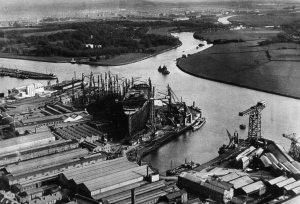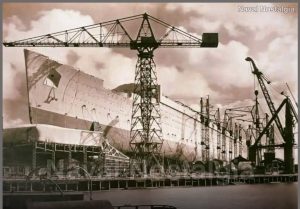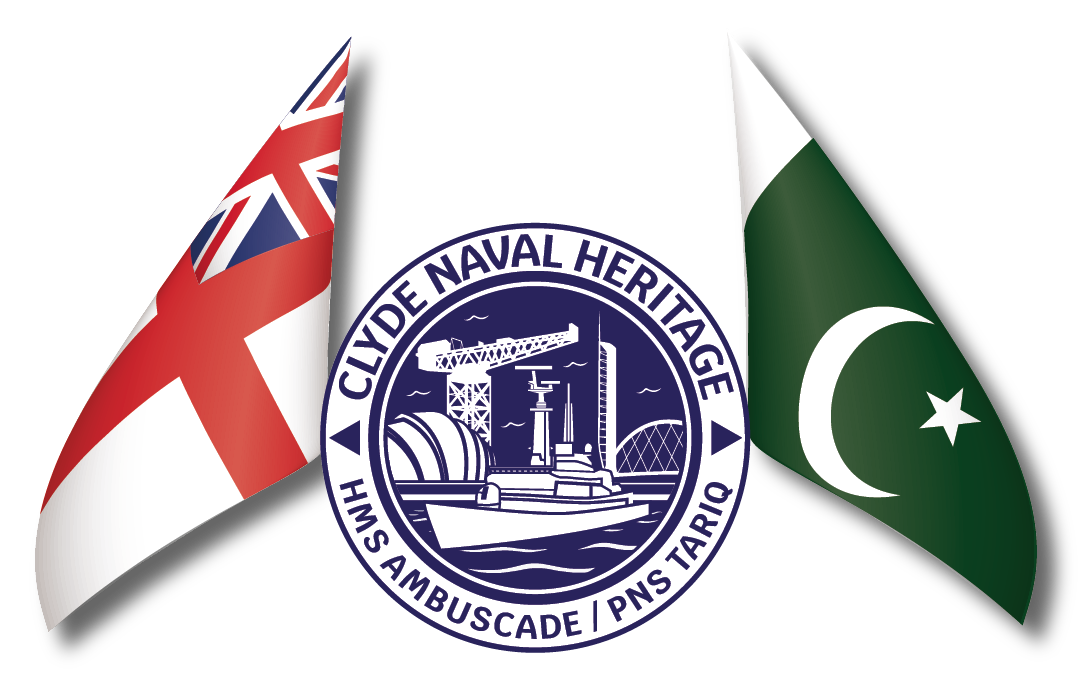The RMS *Queen Mary* is one of the most iconic ocean liners of the 20th century. Built during a period of intense competition in transatlantic shipping, the ship represents a remarkable engineering feat, a floating luxury hotel, and later, a historic museum and attraction. Below is a detailed history of the ship, from its conception to its current status.
Conception and Design (1920s–1930s)
The idea for the Queen Mary was born out of the rivalry between British and French shipbuilders, as well as the need for faster, larger, and more luxurious ships to serve the growing demand for transatlantic travel in the early 20th century. In the 1920s, the Cunard Line, a British shipping company, faced stiff competition from the French Line’s SS Île de France and SS Normandie. Cunard wanted to regain supremacy on the prestigious North Atlantic route between Europe and America.
Early planning: Cunard’s solution was to build not just one, but two ships that would operate together, ensuring weekly transatlantic service. The first of these ships would later become the Queen Mary, named after Queen Mary of Teck, wife of King George V.
Construction: Construction of the Queen Mary began in 1930 at the John Brown & Company shipyard in Clydebank, Scotland. The ship was designated Hull Number 534, but its building was delayed by the Great Depression. Cunard was forced to halt construction in 1931 due to financial difficulties. Work resumed in 1934 after a government loan was secured, contingent upon Cunard merging with its rival, the White Star Line.

Launch and Early Service (1934–1939)
The Queen Mary was officially launched on September 26, 1934, in a grand ceremony attended by King George V and Queen Mary herself. The ship was completed and made its maiden voyage on May 27, 1936, from Southampton to New York. At the time, it was the largest and most luxurious ocean liner in the world, boasting Art Deco interiors, lavish dining rooms, and state-of-the-art amenities.

Size and speed: The Queen Mary was 1,019 feet (311 meters) long and weighed over 81,000 gross tons. It could carry more than 2,000 passengers and 1,100 crew members. Powered by quadruple screws driven by steam turbines, the ship could reach speeds exceeding 30 knots (34.5 mph), making it one of the fastest liners of its time.
Racing for the Blue Riband: The Queen Mary quickly became involved in the race for the Blue Riband, a prestigious award given to the passenger ship making the fastest Atlantic crossing. In 1936, the Normandie held the record, but in 1938, the Queen Mary set a new benchmark, crossing the Atlantic in just under four days.
Wartime Service (1939–1946):
With the outbreak of World War II in 1939, the Queen Mary was requisitioned by the British government and converted into a troopship. The ship’s luxurious interiors were stripped out, and it was repainted in battleship grey, earning it the nickname “The Grey Ghost” due to its speed and elusive presence in the waters.
Troopship duties: The Queen Mary played a crucial role in transporting Allied troops across the Atlantic. At times, it carried as many as 16,000 soldiers in a single crossing. The ship was involved in several significant wartime operations, including carrying American troops to Europe during the build up for D-Day.
Notable incidents: One of the most tragic events during its wartime service occurred in 1942 when the Queen Mary accidentally collided with the British light cruiser HMS Curacoa off the coast of Ireland. The Curacoa was cut in half, and over 300 crew members lost their lives. The Queen Mary was under strict orders not to stop for any reason to avoid becoming a target for enemy submarines, so it continued on its course after the collision.

Post-War Revival and Golden Age (1946–1960s)
After the war, the Queen Mary was refitted and restored to its pre-war luxury. It returned to passenger service in 1947, resuming its role as one of the most prestigious transatlantic liners. The ship became synonymous with glamour and high society, carrying celebrities, royalty, and political leaders across the ocean.
Peak years: During the late 1940s and 1950s, the Queen Mary was one of the most popular ships on the transatlantic route. However, by the late 1950s, the rise of jet air travel began to take a toll on the ocean liner industry. The speed and convenience of airplanes made transatlantic flights more attractive than week-long ocean voyages, even on ships as grand as the Queen Mary.
Gradual decline: By the early 1960s, the Queen Mary and other ocean liners were operating at a loss. While the ship remained a favourite for many travellers, its era was clearly coming to an end. Cunard continued to operate the ship, but passenger numbers dwindled, and the company eventually decided to retire the Queen Mary from service.
Retirement and Conversion to a Museum (1967–Present)
On September 27, 1967, the Queen Mary embarked on its final voyage, a 39-day journey from Southampton to its new home in Long Beach, California. The city of Long Beach had purchased the ship as part of a plan to turn it into a floating hotel and museum.
Conversion: After its arrival in Long Beach, the ship underwent significant modifications. The engines and much of the lower decks were removed to make room for exhibit spaces, hotel rooms, and restaurants. The Queen Mary opened to the public in 1971 as a tourist attraction and hotel, and over the decades, it has hosted millions of visitors.

Ghost stories and paranormal activity: The Queen Mary has gained a reputation as one of the most haunted places in the United States, with numerous reports of ghost sightings and paranormal activity. Visitors and ghost hunters have claimed to see the spirits of former crew members, passengers, and even soldiers who served aboard the ship during World War II. This haunted history has become a key part of the ship’s attraction, drawing in thrill-seekers and paranormal enthusiasts.
Preservation and Modern Challenges
Over the years, the Queen Mary has faced challenges related to its preservation. As the ship ages, maintaining its structure and historical integrity has become increasingly costly. In 2017, it was revealed that the ship was in need of extensive repairs to prevent further deterioration. Various efforts have been made to raise funds for restoration, and the ship remains an important historical landmark.
Cultural impact: The Queen Mary is not only a symbol of maritime history but also of the Art Deco period and the golden age of ocean travel. It has appeared in films, hosted countless events, and remains an important fixture in both British and American cultural memory.
The RMS Queen Mary is a testament to a bygone era of luxurious ocean travel, wartime service, and post-war revival. Its transformation into a museum and tourist attraction ensures that its legacy endures, providing a tangible link to the history of transatlantic voyages and the role ocean liners played in shaping 20th-century travel and global culture. Today, the Queen Mary continues to captivate visitors with its blend of glamour, history, and mystery.

